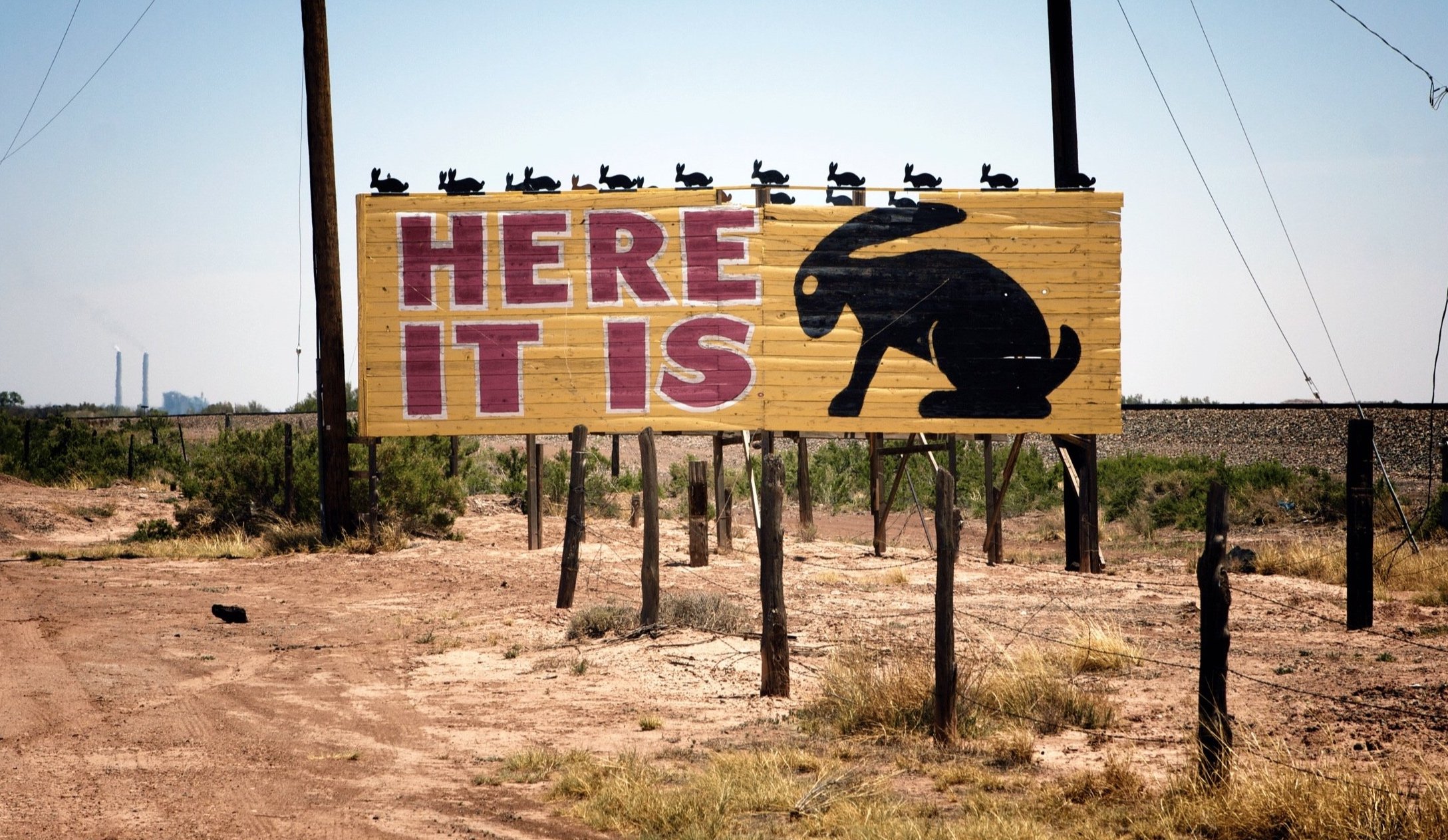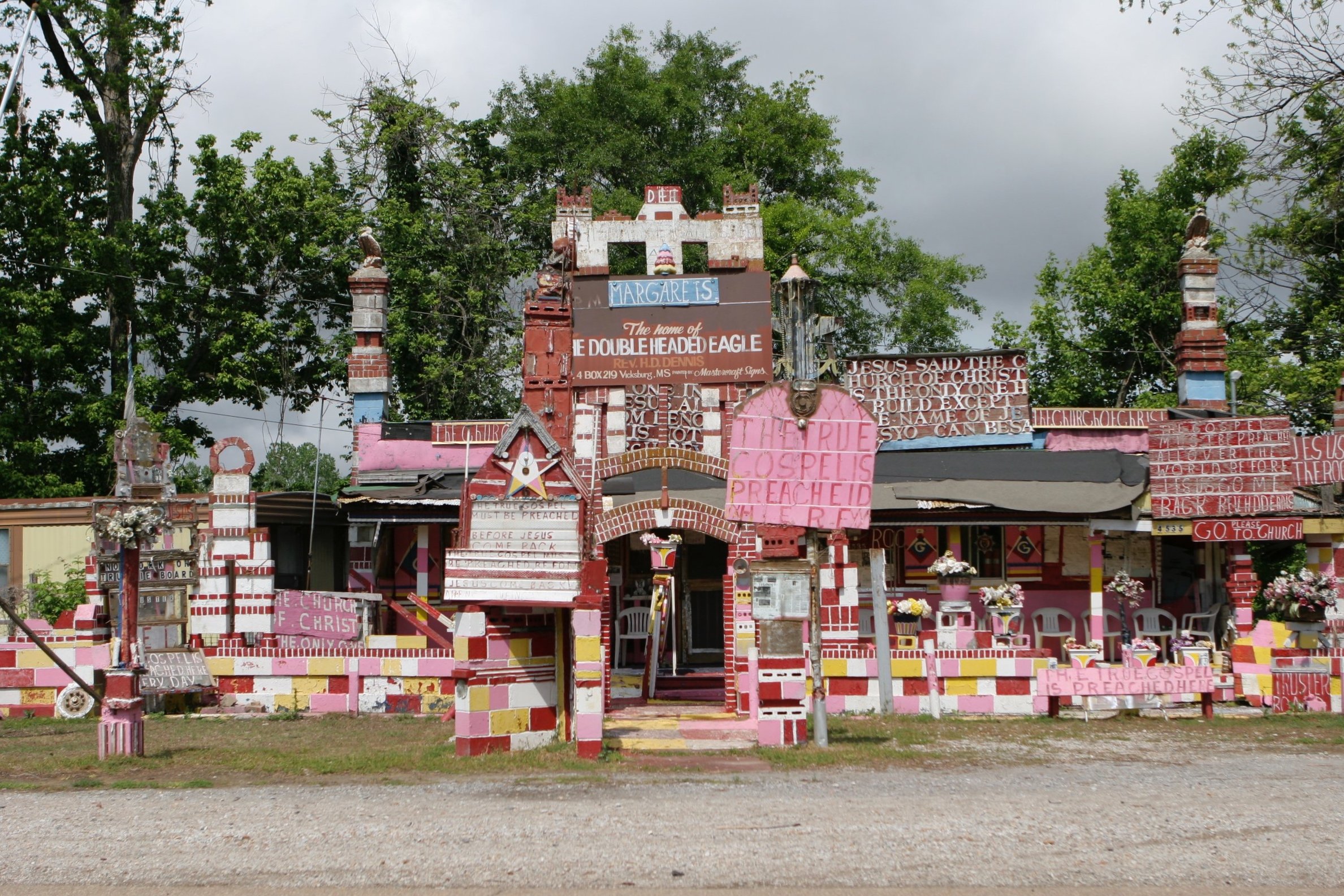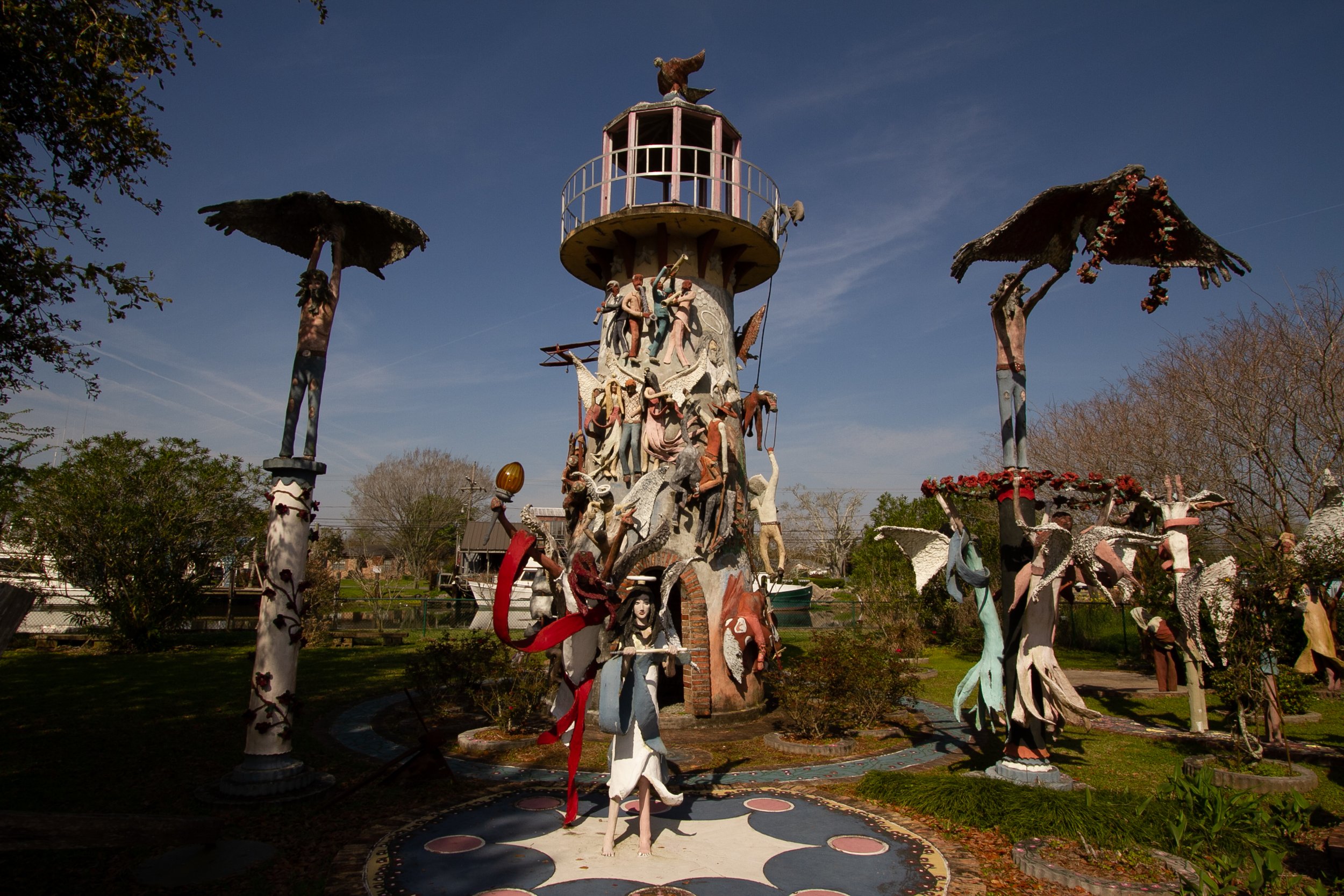
Detour Art
A curated guide to Artist-built Environments
region by region, coast-to-coast.
Dedicated to the sheer joy of outsider, folk, visionary, self-taught, vernacular art and environment discoveries found all along the back roads (and side streets).
Artist-built Environments in the United States
Note: Things change, so check first before arriving. When visiting art environments, remember they are usually on private property, so please be respectful and don’t trespass.
“PECULIAR TRAVEL SUGGESTIONS ARE DANCING LESSONS FROM GOD.”
— Kurt Vonnegut
Road stories
Garden of Salvation - Kenny Hill
Kenny Hill is a bricklayer by trade. One day, for who knows what reason, he started working on a sculpture. It was a self-portrait, and he told a neighbor that if he liked it when it was done, he was going to make more. He must have liked it, because for the next twelve years, between bouts of earning a living, he toiled away on a small plot of land just off a bayou in Chauvin, Louisiana.
Working in concrete, he built life-size figures, telling his version of the story of salvation. There are angels holding horns, and angels with sand clocks, angels with swords, and angels playing harps, and then more angels after that. There's Christ on the cross, and the Gates of Heaven. There are lost souls, world-weary people, and there are self-portraits of Kenny, along the path at various stages. And, as you might expect, there are the Gates of Hell, as a reminder of the wrong path.
Clementine Hunter and the Melrose Plantation
Clementine Hunter was a self-taught Black folk artist from the Cane River region of Louisiana, who lived and worked on Melrose Plantation.
Hunter was born into a Louisiana Creole family at Hidden Hill Plantation near Cloutierville, in Natchitoches Parish, Louisiana. She started working as a farm laborer when young, and never learned to read or write. In her fifties, she began to sell her paintings, which soon gained local and national attention for their complexity in depicting Black Southern life in the early twentieth century.
Initially she sold her first paintings for as little as 25 cents. But by the end of her life, her work was being exhibited in museums and sold by dealers for thousands of dollars. Clementine Hunter produced an estimated 5,000 to 10,000 paintings in her lifetime.


















